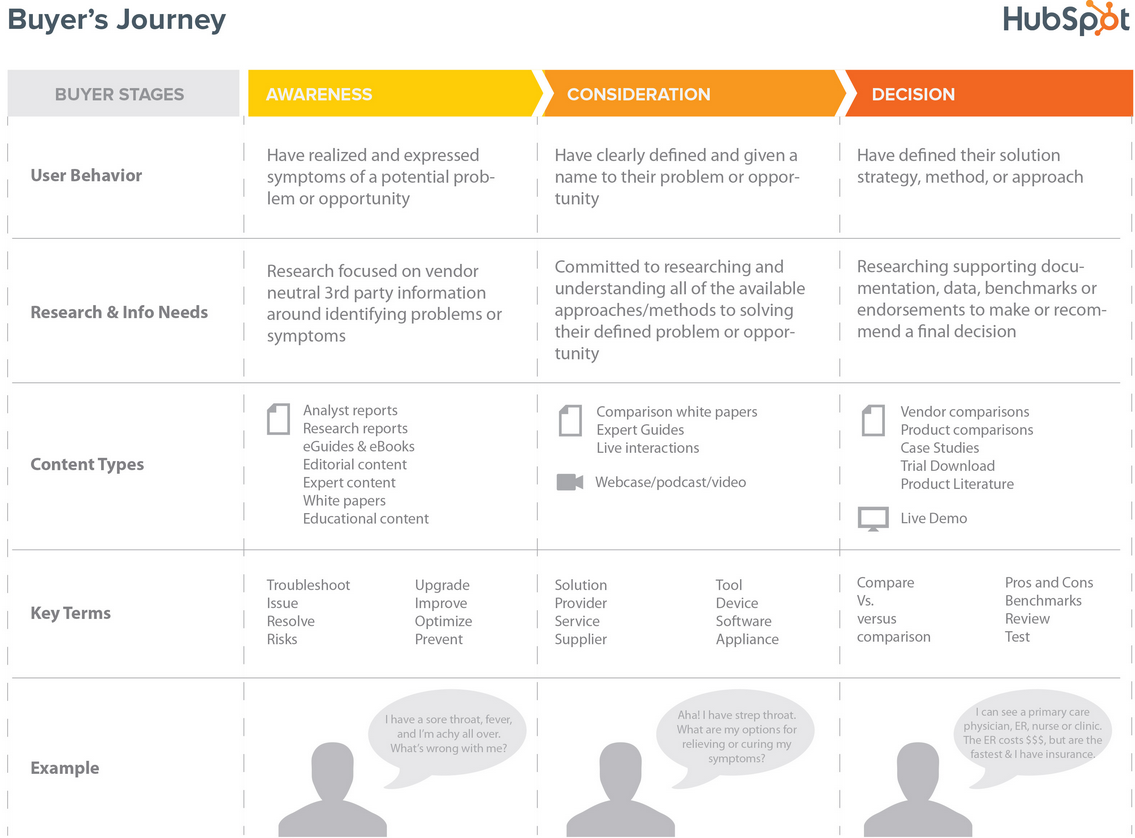 After you define your website personas, you need to consider the purchasing process from your personas’ perspectives. Since 70% of the decision process is already complete before a buyer reaches out to a salesperson, it is especially important to make sure that your website provides visitors with the right content at the right time to make a purchase decision. Creating a buyer’s journey will ensure that you can provide your visitors with an integrated website experience that will produce more leads and sales.
After you define your website personas, you need to consider the purchasing process from your personas’ perspectives. Since 70% of the decision process is already complete before a buyer reaches out to a salesperson, it is especially important to make sure that your website provides visitors with the right content at the right time to make a purchase decision. Creating a buyer’s journey will ensure that you can provide your visitors with an integrated website experience that will produce more leads and sales.
What Is a Buyer’s Journey?
A buyer’s journey is a roadmap your personas travel when making a purchase decision. It consists of three key phases: the Awareness stage, the Consideration stage and the Decision stage. In each stage, potential buyers are nurtured through the sales funnel with very specific content offers, engagements methods and experiences that eventually persuade them to purchase from your company. Everything on your website, from information architecture to content organization, design elements and more, should be structured around the buyer’s journey. In addition, your buyer’s journey should be an integral part of your marketing and sales strategy. Below is a description of all of the stages of the buyer’s journey:

Source: HubSpot
Awareness Stage
The first part of the buyer’s journey is the Awareness stage. Here, potential buyers realize they have a problem and are researching possible causes. They are searching online for neutral, educational information that answers questions about their specific need or want; they are not searching for a vendor at this point. You can help these buyers find the content they’re looking for by using keywords like troubleshoot, improve, resolve and prevent. Examples of appropriate content for personas in the Awareness stage are eBooks, expert content and research reports. Here’s an example of good Awareness Stage content:

Source: HubSpot
Consideration Stage
Now that potential buyers know what their pain point is exactly, they are looking into all options that might solve their problem. Buyers in the Consideration stage compare and contrast their possible approaches, but they are not quite ready to hear about your company’s sales solution. Help these prospects find the materials they are looking for by using keywords like solution, provider, service and supplier. Good Consideration stage content includes eBooks and whitepapers, podcasts, and live interactions. The eBook pictured below is a great example of Consideration stage content:

Source: HubSpot
Decision Stage
The Decision stage is the final step in the buyer’s journey. At this point, potential buyers have already decided on a specific solution and are trying to find the best company to provide it. What potential buyers need now is proof that you can solve their problem. This is your chance to shine, but first you’ve got to get their attention. Some of the keywords you should use to indicate Decision stage content are compare, review, test, and pros and cons. You should give buyers in this stage vendor comparisons, product comparisons, case studies and trial downloads. Potential buyers in the Decision stage will be looking for content like this:

Source: HubSpot
Why the Buyer’s Journey Matters
Buyers these days are 5x more dependent on website content than they were five years ago and are much less dependent on salespeople. So, in order to affect potential buyers’ decisions, you need to catch their attention much earlier in the sales process. If you wait until they reach out to your salesperson, you will have missed a key opportunity to influence their decision. If you want to create a customer-friendly website that drives sales, your content must strategically fit into each stage of the buyer’s journey. Here's a summary of how to match your content to the buyer's journey:

Source: HubSpot


